
An illustrator is a narrative artist who specializes in enhancing a writing by providing visual representation that corresponds to the content of the associated text. The illustration may be intended to clarify complicated concepts or objects that are difficult to describe textually, which is the reason illustrations are often found in children's books.
An illustration may be used in advertisements, greeting cards, posters, books, newspapers, and magazines. During the first decades of the twentieth century the large magazines dominated the entertainment market. Before photos could be mass printed the illustrator ruled over publishing and became the rock stars of their day. Click on Leyendecker's signature (above right) for a short video.

Pre-dating Hollywood movie stars the artists whose illustrations delighted the fancies of millions of Americans became celebrities and therefor the subject of headlines, much gossip fan clubs and collectors. The one notable exception was J.C. Leyendecker (right).
During his life he was withdrawn, almost reclusive solitary man whose inner conflicts (which must have been great) were kept very private. He did not leave any written records, journals or diaries about his life and only two written sources exist to provide any insight into the artist himself: J.C. Leyendecker (1974) by Michael Schau and My Adventures as an Illustrator (1960) by Norman Rockwell.
Just as Charles Dana Gibson presented his public with the distinctive mark of the patrician American woman, so did J.C. Leyendecker establish the fashionable American man. His "Arrow Collar Man" is the square jawed, aloof, unconquerable, gentleman who, for decades, became the symbol of what manhood should be.
In New York, J.C. Leyendecker had become among the city's most prominent illustrators, his work appearing in many national magazines. It was his commercial work that established him most rapidly as one of the most sought after illustrators of his day. Cluett, Peabody & Co., Inc. hired him to crerate the art for a campaign to advertise their Arrow brand detachable shirt collars. The so called "Arrow Collar Man" became a mega-star overnight, his elegant hauteur used to sell several hundred styles of shirt collars. The Arrow Collar man represented a phenomenon which Michael Schau described in his book, J.C.Leyendecker like this:
"...Today it's difficult to imagine the sensation created by Leyendecker's pictures. Fan mail for one model or the other arrived at Cluett, Peabody by the ton, and in one month in the early twenties the Arrow Man received 17,000 fan letters, gifts, marriage proposals, and notes threatening suicide. A deluge surpassing even Rudolph Valentino's mail at the star's apex..."
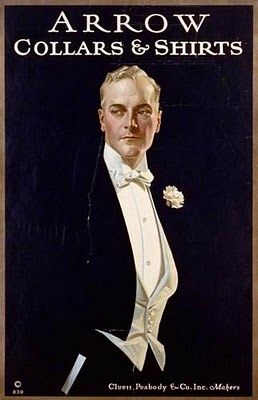
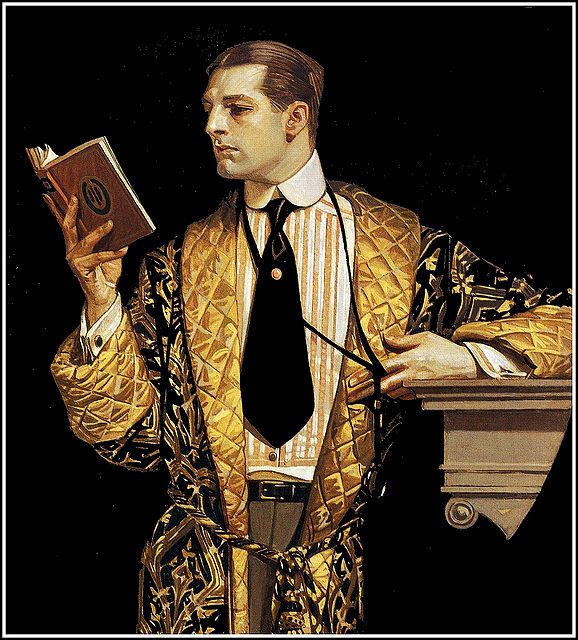
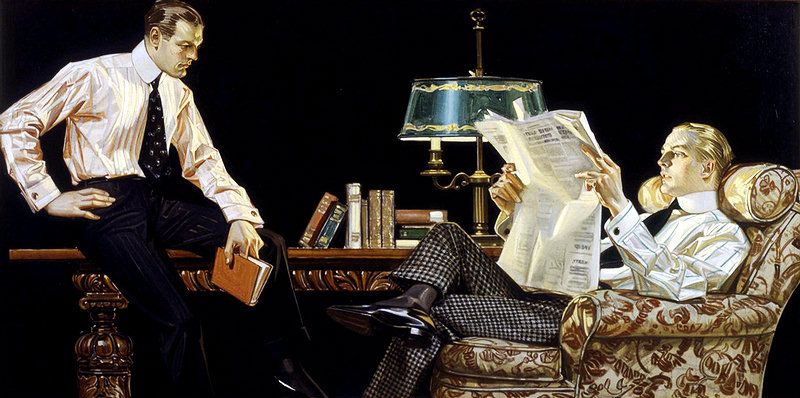
His success with the Arrow campaign drew the attention of other clothing manufacturers as well and J. C. began producing fashion illustration for companies like Hart Schaffner & Marx, B. Kuppenheimer and Interwoven Socks.
He continued his commercial work and between 1903 and 1943 his covers for the Saturday Evening Post appeared on all the Holiday issues (always their biggest sellers) and on many issues in between. The idea to use a baby (CLICK HERE) to represent the New Year was Leyendecker's and his good natured characters strutting across the pages of the magazine inspired Norman Rockwell in creating his first cover for the Post.
His meticulous work habits were marred only by his tendency to rework a painting so many times that he was at continual risk of missing deadlines. Here is Norman Rockwell's account of how J. C. would execute one of his paintings:
"...He would make endless little sketches from the model, two or three of the hands, a couple of the head, the torso, the eyes, the folds of the dress, the shoes, until he had everything drawn exactly as he wanted it. Usually he filled three or four canvases in this way. Then he would combine the sketches on another canvas and that was his finished painting. By working in this way, he explained, he could forget about draftsmanship and concentrate on the model and the situation. In painting, the whole isn't the sum of the parts, you have to see the whole thing at once all the time you're painting..."

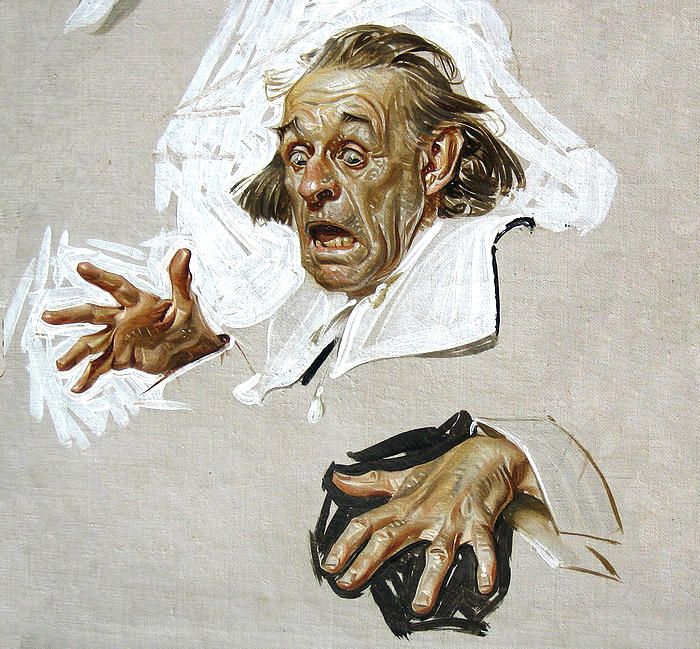
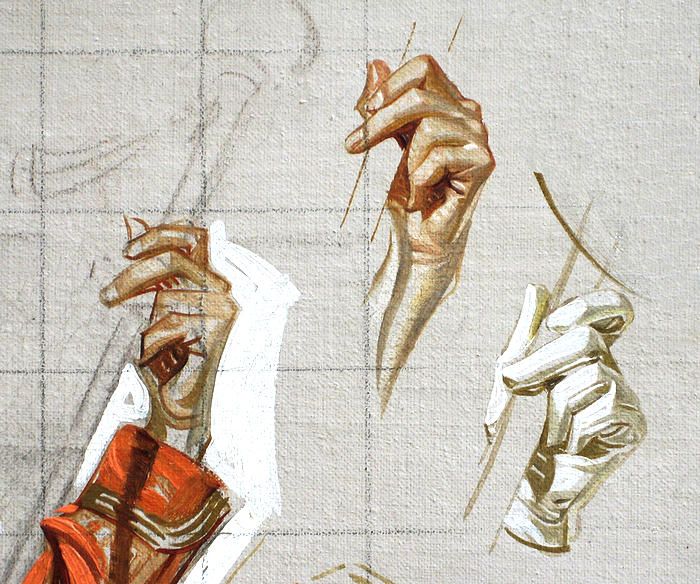
His pencil or charcol sketches were only about 2 x 3 inches, the oil sketches only slightly larger. Dating from his days as a student in the Académie Julian in Paris, J. C. relied upon the traditional method of copying by "squaring up". With a straightedge as a guide, he drew pencil lines in a grid like pattern across the smaller sketch and bisected these squares with diagonal lines. By squaring up the larger surface with proportionately larger squares, and following the placement of the forms within each square on the sketch, he could transfer the smaller version onto the large surface almost mechanically.
For a single painting he might make dozens of oil sketches on canvas. A hand in several positions, the face with many expressions, the body posed in a different ways, squaring up the sketches he preferred and transferring to the larger surface with the squaring up technique.
Like many young movie & rock stars today, the sudden onslaught of success spelled big bucks for J.C. and changed the way he lived considerably. He spent his money as fast as he earned it. He had two brothers, the older Adolph and a younger brother Frank Xavier. The three Leyendecker brothers cut quite a trim figure and were as fashionable as any Arrow Collar Man and no less handsome as they strolled down the street in New Rochelle.
Norman Rockwell describes his first impression of the two brothers, J.C. and Frank:
"...they were quite short and walked in step, with a real military precision, the tips of their canes and their black and white saddle shoes hitting the pavement at precisely the same instant. They wore white flannels, double breasted blue blazers with shiny brass buttons and stiff straw hats. One-two, one-two, one-two they marched towards me. As they turned sharply without breaking step into our yard, I could see they were both very handsome, dark complexioned with high cheek bones and straight, delicately molded noses. Like Spaniards. And trim, well built, the line of their jackets falling straight from shoulder to hip..."

Brother F.X. Leyendecker had his own distinctive style (left) and was considered "the second" or "lesser" Leyendecker, as he was the younger brother of the longer lived and more prolific JC Leyendecker. In reality, FX paved the way for JC in almost every periodical and in every style that JC would master. Dozens of pieces show he was every bit as colorful, creative, entertaining and flamboyant as his older brother.
F.X. had an impressive catalog including posters, cover art, book plates, advertising, and more. His covers for Vanity Fair, The Humor, Life, and Vogue are stand-outs. Other covers and story work for Collier's, Saturday Evening Post, Leslie's, McClure's. Ads for Durham Hosiery, Remington Guns, Palmolive, Howard Watches, Willy's Motors.
F.X. and J.C. were now living in the lap of luxury and were the envy of everyone. Since childhood they had been inseperable, complementing each other in personality, the younger brother being more outgoing and social, the older more withdrawn and private. In 1914 the brothers had a mansion constructed in New Rochelle where Remington had lived and Rockwell would meet them as neighbors.


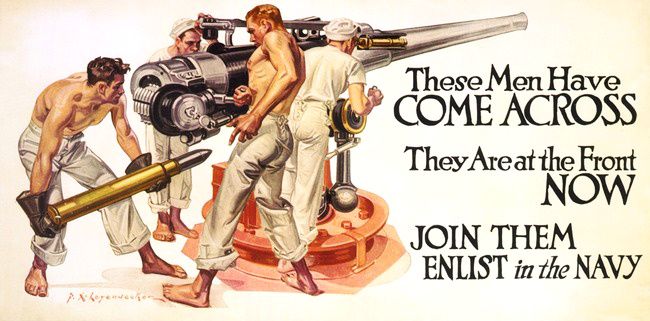

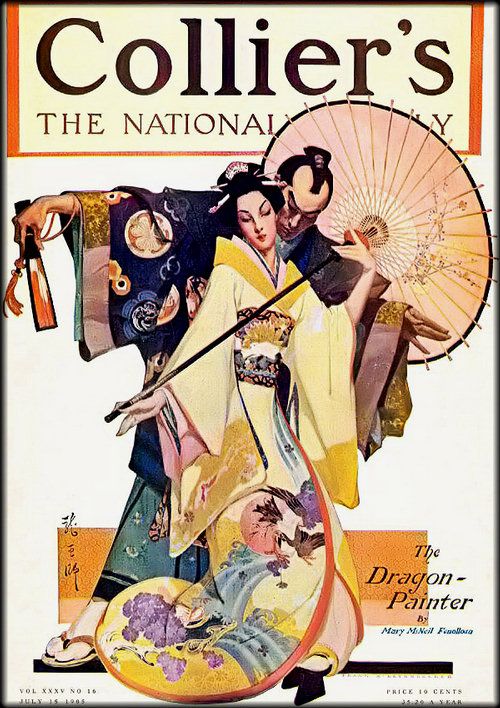
Cover of Colliers Magazine July 1905 by F.X. Leyendecker
Norman Rockwell described the brother's relationship like this:
"...They had the same friends, would go everywhere together, even painted alike, though Frank never had Joe's facility or technical polish. They shared a secret medium (that's what you mix your oil paint with). Only Joe & Frank knew the formula. For years they kept it secret, refusing even to exhibit their pictures for fear that some artist would discover it. The use of this medium gave their paintings a special quality. You could see each brush stroke in the finished painting. Very distinctive..."
J.C. and Frank entertained with parties throughout the twenties and brings the F. Scott Fitzgerald novel "The Great Gatsby" to mind exploring themes of decadence, idealism, resistance to change, social upheavel and excess. Creating a portrait of the "Twenties Jazz Era" described as a cautionary tale regarding the American Dream. In spite of their closeness the differences between the brothers grew with time and success. The event which was to finally seperate them arrived like Yoko Ono and the Beatles in the form of one Charles Beach.

The J.C. Leyendecker home in New Rochelle
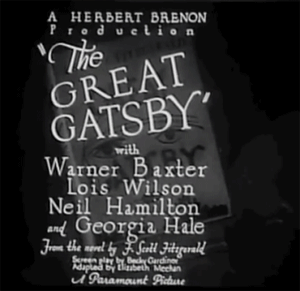
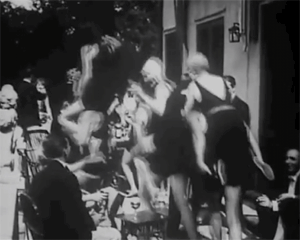
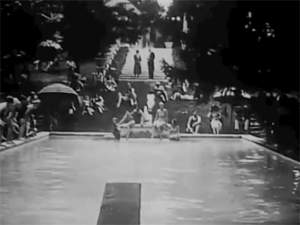
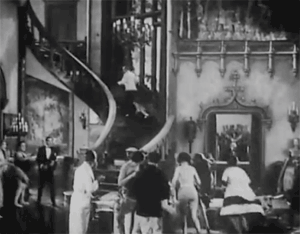
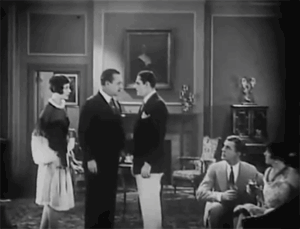
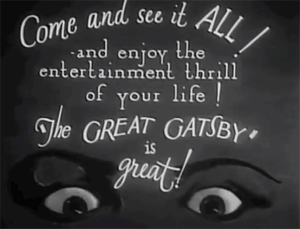
Illustrators like J.C. and Frank are given an assignment and a deadline. While J.C. was a fastidious man and could always deliver a creative piece and on-time, Frank denied that he was even interested in Commercial work claiming a preference for Fine Art, yet rarely producing any work in this area. Unlike his brother, who never missed a deadline, Frank would delay and procrastinate, refining and re-working his paintings, frequently losing the assignment altogether because of his inability to deliver.

Click any pic to enlarge
Whatever differences the brothers may have had only grew with the arrival of Charles Beach. The Canadian born Beach arrived on 1901, visiting J.C. in his New York studio because, according to Rockwell’s account…
…He had fallen in love with a girl in one of J.C.’s drawings, and had come all the way from Canada to meet her…
J.C. chose Beach to be the model for his first Arrow Collar ad, a decision he made because of Beach’s outstanding looks. Rockwell wrote:
“…He was tall, powerfully built, and extraordinarily handsome. He looked like an athlete from one of the Ivy League Colleges. He spoke with a clipped British accent and was always beautifully dressed.…”
The relationship between Beach and J.C. Leyendecker was to last over fifty years. All his life Joe had been bound to his family. He supported his parents until their death and lived with his unmarried brother and sister Augusta until 1921, continuing to support her until his death in 1951.
With The Night Mail – (Rudyard Kipling)
Woven With The Ship - (Cyrus Townsend Brady)
Here on the right are three typical assignments given to Frank. Over the years Frank had grown increasingly neurotic about his work. Occasionally he would subvert an assignment on purpose in order to lose the account. He received fewer and fewer assignments as a result. Falling behind on his contributions to the mortgage payments he became irritated whenever Beach would make up the difference and yet made no real effort to improve his performance.
Beach no doubt, and perhaps deliberately came between the brothers, but the family remained dependent. The growing tensions finally erupted in 1922, and Frank moved out of the mansion, sister Augusta leaving with him in support. Eighteen months later on April 18, 1924 (...perhaps from the effect of drugs...) Frank was dead at forty seven years old.

Joe was deeply shocked by the death of his brother and became even more reclusive. He continued to live in the Mount Tom Mansion and only seldom left the premises. No longer commuting to New York he worked in a studio wing connected to the house. Beach ran all the errands in New York, paid all the bills and ran the estate. When Joe wasn't painting, he was tending his gardens or strolling around the estate, still handsomely dressed and with a distinguished air about him. Despite his sadness he continued to be extremely productive throughout the twenties and even into the mid-thirties his annual income was reported to be around $50,000 a year. A huge sum by today's standards.
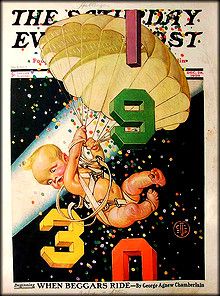
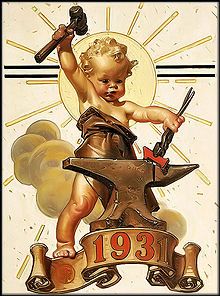
Click Any To Enlarge
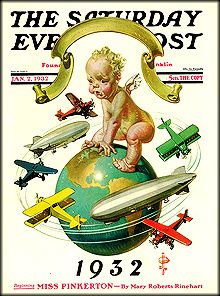
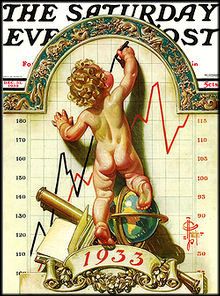
More Leyendecker Covers on The Saturday Evening Post
Examining the above covers by J.C. offers little evidence of what happened on October 25, 1929. He seems insulated from the events that caused that particular date to be forever after known as "Black Tuesday". This event forever scarred that generation and what followed was a national agony until WWII ended the great depression.
"Black Tuesday" affected practically every single American. Perhaps it was J.C.'s credo of "...spending it just a little faster than you get it..." that saved him from the worst financial catastrophy in American history. Possibly he was not as heavily invested in the market, even with his enormous salary. I see little sign of the agony of "The Great Depression" during the years he published the above covers.
In 1951, at the age of seventy-seven, J.C. Leyendecker died suddendly from a massive heart attack while sitting with Charles Beach on the patio overlooking his well tended gardens. Apparently overcome by the loss of his friend, Charles developed a severe drinking problem and passed away shortly after the death of J.C.. The estate had already been sold and the marevelous paintings dispersed.
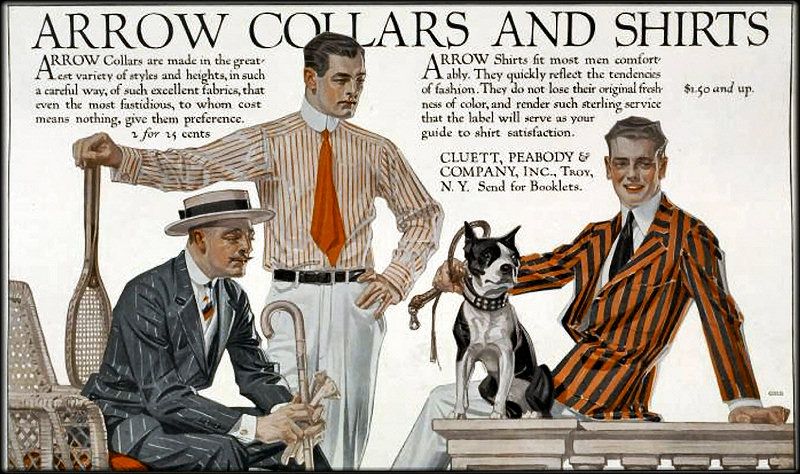
Movie Classics

Click Pic Above for Main Menu

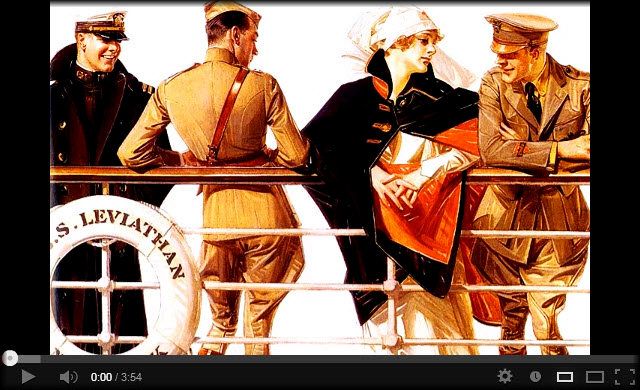
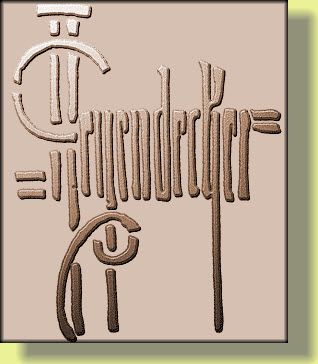
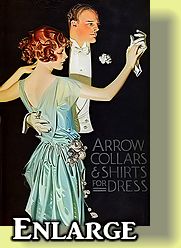
1 comment:
Important to note Charles Beach and J.C Leyendecker were lovers, not just friends. who enjoyed a creative and romantic partnership of over 50 years.
Post a Comment